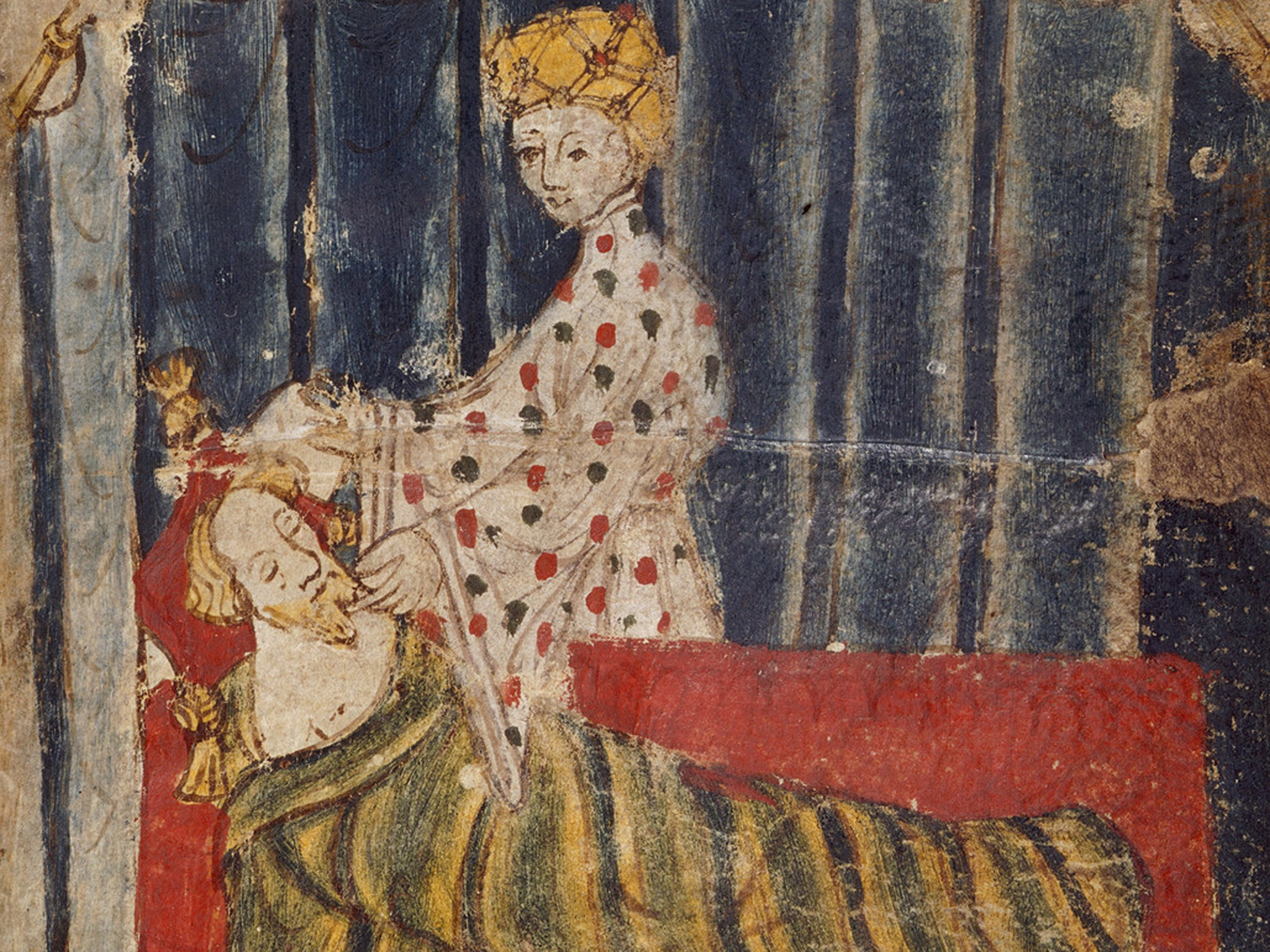Book of a Lifetime: Sir Gawain and the Green Knight
From The Independent archive: Margaret Elphinstone on a weaving of 14th-century folk tales that still feels relevant today

Sir Gawain and the Green Knight was required reading for literature undergraduates 40 years ago, and it has stayed with me ever since, though nowadays I seldom return to the original Middle English. That’s laziness, and it deprives me of some of the best alliterative poetry in English. But what translations do give is the story, which has everything necessary for a good novel: a perfectly-formed plot, a protagonist with a tormented inner life, stirring action with neatly counter-pointed violence and sex, startling metaphors and superb natural description. Gawain’s winter journey and the hunting sequences in the snow-bound forest remind us that nature, in the 14th century, was not the object of nostalgic quest, but simply the world as it was: beautiful, dangerous, uncomfortable and Other. The poem also carries a trailing weight of symbolism that you can drag as far as you like into the realms of Celtic myth and pagan pantheism. Green Men, fertility rituals, nature spirits and shamanic games have enjoyed a comeback since my dusty undergraduate days.
The poet takes three themes from folk-tale and weaves them into a seamless whole that far surpasses the sum of the disparate ingredients. First, the beheading game: the Green Knight appears on New Year’s Day and challenges King Arthur’s knights to an exchange of blows. Gawain accepts, and strikes off the Green Knight’s head. Not a whit abashed, the Green Knight picks up his head, mounts his horse, and rides away. A year and a day later, Gawain treks into the wild forest to keep his part of the bargain. The beheading game is interwoven with a seduction game: three times the lady of Bertilak’s mysterious castle makes a startlingly upfront proposal to Gawain – “ye ar welcum to my cors” – and twice he resists, but the third time... It’s also an exchange of winnings story – thrice Bertilak gives Gawain the animals he has killed in the day’s hunt, and thrice Gawain honourably passes on to his host the kisses he has received. All classic folk-tale motifs, but this is also (stretching a generic point just a little) a novel. Gawain is a “modern”, if to be modern is to suffer inner torment, to feel unsure and inadequate, to be torn between outmoded belief systems and desire to live, and love, while life and love are on offer. The poet makes a half-hearted attempt to keep the poem within the bounds of Arthurian romance: the chivalric ideal is upheld, because in the end the whole thing turns out to be - inevitably - the fault of a powerful old woman. When I was 19, Gawain was my undisputed hero of Sir Gawain and the Green Knight. Now I see a whole cast of troubled, resolute characters – the lady, Bertilak, Morgan La Faye herself – whose voices reach out from their 14th-century trappings of lost language and chivalric tale, and sound as clearly human today as ever they did.
Subscribe to Independent Premium to bookmark this article
Want to bookmark your favourite articles and stories to read or reference later? Start your Independent Premium subscription today.
Join our commenting forum
Join thought-provoking conversations, follow other Independent readers and see their replies